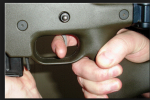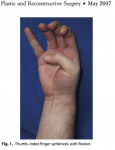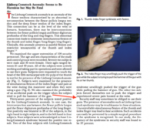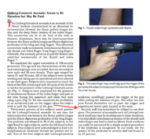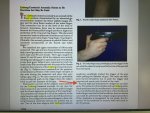Anyone interested in knowing more about the anatomy of a trigger pull or involved in training others in firearms should continue reading below.
My intent is not to hijack this thread however only to correct the statement that there are "21 muscles involved in a trigger squeeze". This is how disinformation is promulgated via internet forums. Unfortunately, there is no short explanation.
There are only a total of 16 muscles within the human hand proper.
All 9 of your hand flexor tendons are controlled by 3 separate muscles in the forearm NOT contained within the hand. In the forearm, one muscle controls all the superficial finger tendons, one muscle controls all the deep finger tendons with thumb flexion independently controlled by its own muscle.
The index finger flexion required to pull a trigger is controlled by a single superficial tendon
plus a single deep tendon to that finger, powered by their two separate respective muscles in the forearm.
Depending on whether one is shooting a rifle with a pistol style grip or a conventional stock the thumb may or may not be involved in the trigger pull process at all.
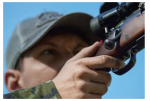
So, if you are just resting your hand alongside the rifle and squeezing the trigger, only 2 muscles are used. If you are using a pistol grip method, the thumb may be involved in wrapping about the grip, so only 3 muscles used.
The "best" manner to position your hand / fingers to control the trigger is often rabidly debated. Importantly however, each individual has similar hand anatomy,
but not identical hand anatomy and its nerve control which results in some tasking their appearance of the trigger pull process to be an unconventional manner, however it still gets their trigger pull executed.
What works well for you may not even be anatomically possible to work well for your buddy.
A relevant illustration is a well-known medical condition (Linburg-Comstock Anomaly) wherein your flexor tendons of the fingers have abnormal cross-over connections to adjacent finger flexor tendons that prohibit the independent movement and fidelity of fingers important to musicians (string instruments and piano) and is relevant to those shooting firearms, particularly pistols, as the condition prohibits squeezing the pistol grip without activating the trigger finger ! This condition can be congenital or acquired e.g. repetitive finger practice (musician / shooter) induces inflammation that results in scarring between tendons of the fingers. Typical medical studies quote the prevalence as 10-15 % in the public-at-large.
Cited below is a 2007 European medical study of armed security staff that had
the condition present in 37 % of 108 staff ! As the title "Limburg-Comstock Anomaly: Seems to Be Harmless but May Be Fatal" suggests the condition can be potentially fatal to themselves or those around them, being unaware that the condition affects them.
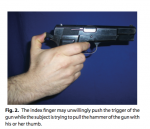
This anatomical variation is just as important to understand for the serious firearm trainer as the "Involuntary Muscle Contractions and the Unintentional Discharge of a Firearm" discussed here, particularly @ post # 15 where a reference article is cited.
https://www.snipershide.com/shooting/forum/...e-referring-to



